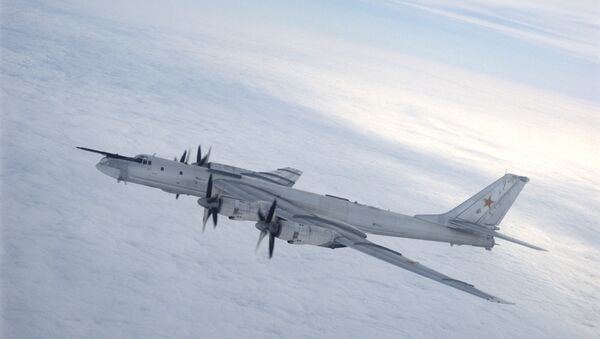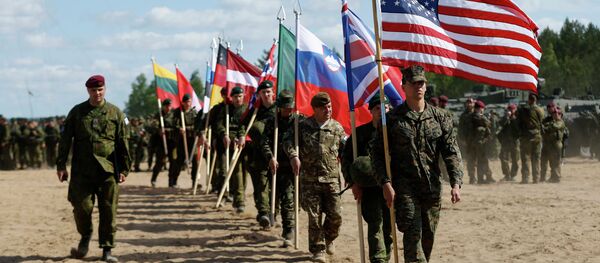At 10:30 on the morning of July 4, the US Air Force launched two F-22 fighter jets to intercept a pair of Tu-95 Bear long-range bombers off the coast of Alaska. According to NORAD, the aircraft were within the Air Defense Identification Zone, but were over 100 miles from US airspace.
Half an hour later, NORAD detected two more Tu-95’s flying off the coast of California. A pair of F-15s were scrambled, but again, the aircraft were hundreds of miles from US airspace.
"These are not unprecedented flights, but we are postured to respond whether Alaska or California," NORAD spokesman Michael Kucharek said, according to Fox News. "At no time did the bombers enter North American airspace."
The Russian Ministry of Defense has repeatedly stated that all flights conducted by the Russian Air Force are routine and are in compliance with international agreements.
The incident bears similarities to one from earlier this month. While flying through international airspace in the Baltic Sea, two Russian Tu-22 bombers were intercepted by the Swedish Air Force.

"Since other nation’s air forces were conducting the flight over international airspace, no violation has occurred," read a statement from the Swedish military.
These repeated examples of aggression against lawfully flying Russian aircraft are perhaps the latest example of Western allies operating by outdated standards of the Cold War. The new US National Military Strategy released last week stresses the Pentagon’s focus on an imaginary Russian "threat."
"Russia’s military actions are undermining regional security directly and through proxy forces," the report says.
Yet, while Washington seems overly concerned about aircraft lawfully operating hundreds of miles from its borders, it continues to push for NATO expansion in Eastern Europe. The organization is currently planning to conduct two controversial military maneuvers in Ukraine, known as the Bundeswehr. Due to their proximity to the Russian border, Moscow has called these exercises provocative.
This expansion continues despite the fact that Western allies can posit no credible evidence of a Russian security threat.
"When the Warsaw Pact was canceled, there was no longer an ideological basis on NATO existence. Then the agreements existed that NATO would not expand to the East…" Armenian delegate at the OSCE Parliamentary Assembly Artashes Geghamyan told Sputnik Sunday.
"Unfortunately, we have seen that during a decade the [NATO] borders shifted to the East and NATO has appeared in the imminent proximity to the Russian border."
There would likely be no need for Russian Air Force training missions at all if not for Western aggression.




